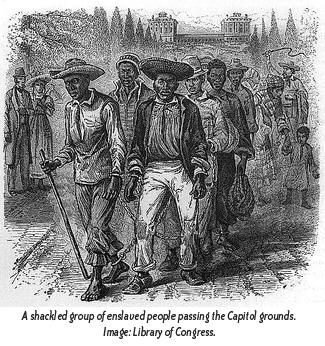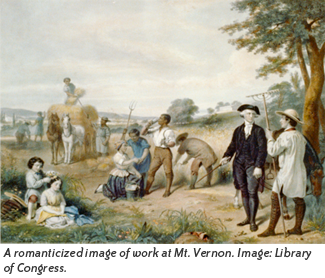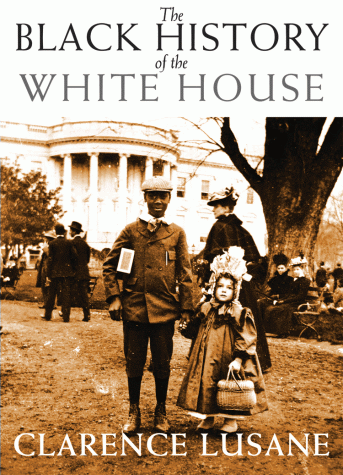
Schools across the country are adorned with posters of the 44 U.S. presidents and the years they served in office. U.S. history textbooks describe the accomplishments and challenges of the major presidential administrations -- George Washington had the Revolutionary War, Abraham Lincoln the Civil War, Teddy Roosevelt the Spanish-American War, and so on. Children's books put students on a first-name basis with the presidents, engaging readers with stories of their dogs in the Rose Garden or childhood escapades. Washington, D.C.'s Smithsonian Institution welcomes visitors to an exhibit of the first ladies' gowns and White House furnishings.
Nowhere in all this information is there any mention of the fact that more than one in four U.S. presidents were involved in human trafficking and slavery. These presidents bought, sold, and bred enslaved people for profit. Of the 12 presidents who were enslavers, more than half kept people in bondage at the White House. For this reason, there is little doubt that the first person of African descent to enter the White House -- or the presidential homes used in New York (1788-90) and Philadelphia (1790-1800) before construction of the White House was complete -- was an enslaved person.
The White House itself, the home of presidents and quintessential symbol of the U.S. presidency, was built with slave labor, just like most other major building projects had been in the 18th-century United States, including many of our most famous buildings like Philadelphia's Independence Hall, Boston's Faneuil Hall, Thomas Jefferson's Monticello, and James Madison's Montpellier. President Washington initially wanted to hire foreign labor to build the White House, but when he realized how costly it would be to pay people fairly, he resorted to slave labor.
Constructed in part by black slave labor, the home and office of the president of the United States has embodied different principles for different people. For whites, whose social privileges and political rights have been protected by the laws of the land, the White House has symbolized the power of freedom and democracy over monarchy. For blacks, whose history is rooted in slavery and the struggle against white domination, the symbolic power of the White House has shifted along with each president's relation to black citizenship. For many whites and people of color, the White House has symbolized the supremacy of white people both domestically and internationally. U.S. nativists with colonizing and imperialist aspirations understood the symbolism of the White House as a projection of that supremacy on a global scale. This idea is embodied in the building project itself.
Although the White House is symbolically significant, there is a largely hidden and silenced black history of the U.S. presidency. Here are just a few examples.
 George Washington's stated antislavery convictions misaligned with his actual political behavior. While professing to abhor slavery and hope for its eventual demise, as president Washington took no real steps in that direction and in fact did everything he could to ensure that not one of the more than 300 people he owned could secure their freedom. During the 10 years of construction of the White House, George Washington spent time in Philadelphia where a law called the Gradual Abolition Act passed in 1780. It stated that any slaves brought into the state were eligible to apply for their freedom if they were there for longer than six months. To get around the law, Washington rotated the people working for him in bondage so that they were there for less than six months each.
George Washington's stated antislavery convictions misaligned with his actual political behavior. While professing to abhor slavery and hope for its eventual demise, as president Washington took no real steps in that direction and in fact did everything he could to ensure that not one of the more than 300 people he owned could secure their freedom. During the 10 years of construction of the White House, George Washington spent time in Philadelphia where a law called the Gradual Abolition Act passed in 1780. It stated that any slaves brought into the state were eligible to apply for their freedom if they were there for longer than six months. To get around the law, Washington rotated the people working for him in bondage so that they were there for less than six months each. Despite Washington's reluctance to carry out his stated antislavery predilections, the movement against slavery grew anyway, including within the president's very own household among the men and women he enslaved. One of the presidential slaves was Ona "Oney" Maria Judge. In March 1796 (the year before Washington's second term in office ended), Oney was told that she would be given to Martha Washington's granddaughter as a wedding present. Oney carefully planned her escape and slipped out of the Washingtons' home in Philadelphia while the Washingtons were eating dinner. Oney Judge fled the most powerful man in the United States, defied his attempts to trick her back into slavery, and lived out a better life. After her successful attempt became widely known, she was a celebrity of sorts. Her escape from the Washingtons fascinated journalists, writers, and others, but more important, it was an inspiration to the abolition movement and other African Americans who were being enslaved by whites.
Despite Washington's reluctance to carry out his stated antislavery predilections, the movement against slavery grew anyway, including within the president's very own household among the men and women he enslaved. One of the presidential slaves was Ona "Oney" Maria Judge. In March 1796 (the year before Washington's second term in office ended), Oney was told that she would be given to Martha Washington's granddaughter as a wedding present. Oney carefully planned her escape and slipped out of the Washingtons' home in Philadelphia while the Washingtons were eating dinner. Oney Judge fled the most powerful man in the United States, defied his attempts to trick her back into slavery, and lived out a better life. After her successful attempt became widely known, she was a celebrity of sorts. Her escape from the Washingtons fascinated journalists, writers, and others, but more important, it was an inspiration to the abolition movement and other African Americans who were being enslaved by whites. By the age of 10, Paul Jennings was enslaved at the White House as a footman for James Madison, the fourth president of the United States. When he got older, Dolley Madison hired out Jennings, keeping every "last red cent" of his earnings. Dolley indicated in her will that she would give Jennings his freedom, but instead sold him before she died. Thankfully, Daniel Webster intervened and purchased his freedom. Soon after, Paul Jennings helped plan one of the most ambitious and daring efforts to liberate enslaved blacks in U.S. history, thePearl Affair. It was not successful, but as with John Brown's raid, the political repercussions lasted for decades and strengthened the abolitionist cause. Paul Jennings went on to become the first person to write a memoir of a firsthand experience working in the White House.
By the age of 10, Paul Jennings was enslaved at the White House as a footman for James Madison, the fourth president of the United States. When he got older, Dolley Madison hired out Jennings, keeping every "last red cent" of his earnings. Dolley indicated in her will that she would give Jennings his freedom, but instead sold him before she died. Thankfully, Daniel Webster intervened and purchased his freedom. Soon after, Paul Jennings helped plan one of the most ambitious and daring efforts to liberate enslaved blacks in U.S. history, thePearl Affair. It was not successful, but as with John Brown's raid, the political repercussions lasted for decades and strengthened the abolitionist cause. Paul Jennings went on to become the first person to write a memoir of a firsthand experience working in the White House.
In textbooks and popular history, the White House is figuratively constructed as a repository of democratic aspirations, high principles, and ethical values. For many Americans, it is subversive to criticize the nation's founders, the founding documents, the presidency, the president's house, and other institutions that have come to symbolize the official story of the United States. It may be uncomfortable to give up long-held and even meaningful beliefs that in many ways build both collective and personal identities. However, erasing enslaved African Americans from the White House and the presidency presents a false portrait of our country's history. If young people -- and all the rest of us -- are to understand a fuller, people's history of the United States, they need to recognize that every aspect of early America was built on slavery.
 Dr. Clarence Lusane is the program director for Comparative and Regional Studies at American University. He teaches courses in comparative race relations, modern social movements, comparative politics of the Americas and Europe, and jazz and international relations. He is a national columnist for the Black Voices syndicated news network.
Dr. Clarence Lusane is the program director for Comparative and Regional Studies at American University. He teaches courses in comparative race relations, modern social movements, comparative politics of the Americas and Europe, and jazz and international relations. He is a national columnist for the Black Voices syndicated news network. Lusane has authored a number of books including
Lusane has authored a number of books including The Black History of the White House (City Lights, 2010). This article is part of the Zinn Education Project If We Knew Our History series.
The Black History of the White House (City Lights, 2010). This article is part of the Zinn Education Project If We Knew Our History series.



No comments:
Post a Comment